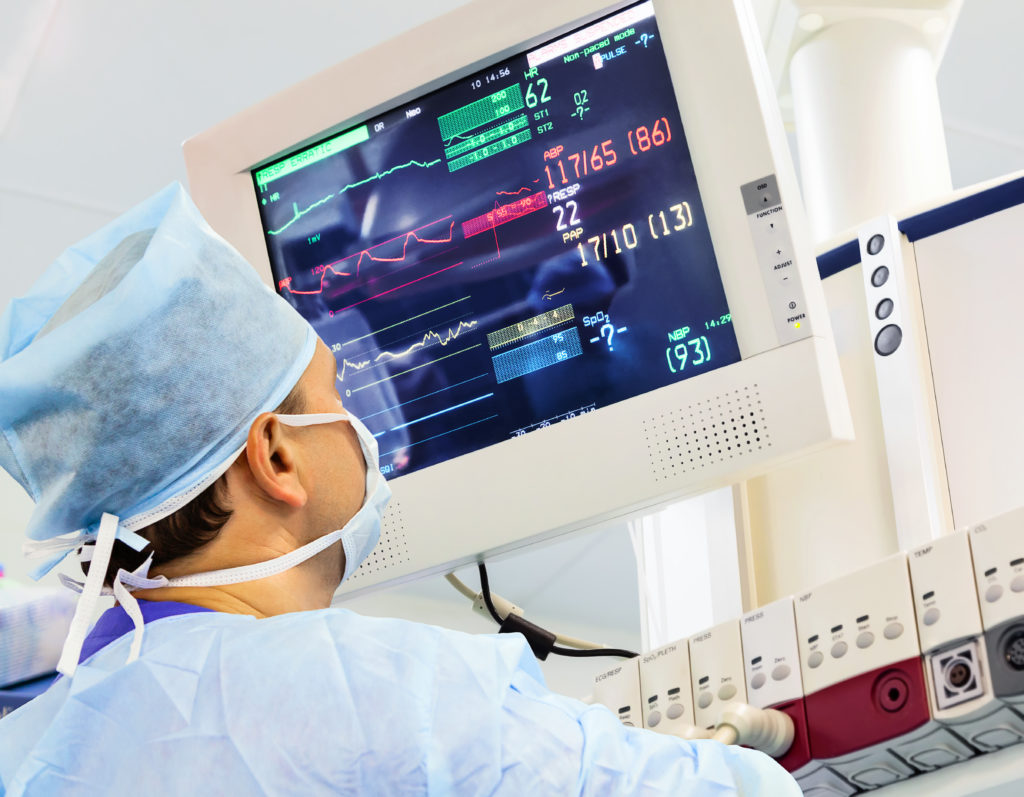Your What do anesthesiologists monitor during surgery images are available. What do anesthesiologists monitor during surgery are a topic that is being searched for and liked by netizens today. You can Find and Download the What do anesthesiologists monitor during surgery files here. Get all free photos and vectors.
If you’re looking for what do anesthesiologists monitor during surgery pictures information linked to the what do anesthesiologists monitor during surgery topic, you have pay a visit to the right blog. Our website always provides you with hints for refferencing the maximum quality video and image content, please kindly surf and locate more informative video content and images that match your interests.
What Do Anesthesiologists Monitor During Surgery. During the surgery the anesthesiologist will monitor the patients blood pressure heart rhythm temperature level of consciousness and amount of oxygen in the blood. The Duties of the Anesthesiologist During Surgery Assess Patient and Administer Anesthetics. What does an Anesthesiologist do during surgery and for patient care. The American Society of Anesthesiologists provides a detailed description of.
 A Crna Vs A Physician Nurse Anesthetist Nurse Midwife Nurse Aesthetic From pinterest.com
A Crna Vs A Physician Nurse Anesthetist Nurse Midwife Nurse Aesthetic From pinterest.com
Anesthesiologists are kind of like airline pilots. The same standards of monitoring apply when the anaesthetist is responsible for localregional anaesthesia or sedative techniques. Doctors set up several monitors to oversee a patients well being during heart bypass surgery. Monitor Patients Vital Signs. The first step is to set up an arterial line which allows the anesthesiologist to observe blood pressure while the surgeon is operating on the heart. Then the surgery will begin.
Monitor and control the patients physiological functions including heart rate and rhythm breathing blood pressure body temperature and body fluid balance.
Why do Vaughn et al. These devices have dramatically improved the safety of general anesthesia. The same standards of monitoring apply when the anaesthetist is responsible for localregional anaesthesia or sedative techniques. The first step is to set up an arterial line which allows the anesthesiologist to observe blood pressure while the surgeon is operating on the heart. Then the surgery will begin. When the patient is paralyzed he or she will not be able to breathe so a breathing tube will be placed.
 Source: pinterest.com
Source: pinterest.com
What do anesthesiologists do. Monitor and control the patients physiological functions including heart rate and rhythm breathing blood pressure body temperature and body fluid balance. Monitor and control the patients vital life functions including heart rate and rhythm breathing blood pressure body temperature and body fluid balance. The anesthesiologist monitors and responds to changes in your vital signs during your entire surgery. Automated electronic anaesthetic record systems that also provide a printed copy are recommended.
 Source: pinterest.com
Source: pinterest.com
The work is surprisingly uneventful - and even boring at times. Anesthesiologists are kind of like airline pilots. Once the patient is asleep the anesthesiologist will paralyze the patient. Answer 1 of 20. An anesthesiologist will monitor the patient during surgery.
 Source: pinterest.com
Source: pinterest.com
The same standards of monitoring apply when the anaesthetist is responsible for localregional anaesthesia or sedative techniques. The Duties of the Anesthesiologist During Surgery Assess Patient and Administer Anesthetics. What Does an Anesthesiologist Do. The first step is to set up an arterial line which allows the anesthesiologist to observe blood pressure while the surgeon is operating on the heart. Their main roles during surgery are.
 Source: uclahealth.org
Source: uclahealth.org
But it is occasionally punctuated by frightening crisis situations in which they truly prove their mettle. Heart rate rhythm blood pressure oxygen level breathing and other parameters give the anesthesiologist the information needed to keep you safe and comfortable during an anesthetic. The anesthesiologist provides pain relief before during and after surgery but they also fulfill a number of other important roles. Once a patient goes to sleep anesthesiologists insert other monitors. Physician anesthesiologists specialize in anesthesia care pain management and critical care medicine.
 Source: pinterest.com
Source: pinterest.com
Once the patient is asleep the anesthesiologist will paralyze the patient. Their main roles during surgery are. Monitor and control the patients vital life functions including heart rate and rhythm breathing blood pressure body temperature and body fluid balance. They constantly keep an eye on your. Physician anesthesiologists specialize in anesthesia care.
 Source: br.pinterest.com
Source: br.pinterest.com
These devices have dramatically improved the safety of general anesthesia. Provide continual medical assessment of the patient. Monitor and control the patients physiological functions including heart rate and rhythm breathing blood pressure body temperature and body fluid balance. The same standards of monitoring apply when the anaesthetist is responsible for localregional anaesthesia or sedative techniques. The anesthesiologist monitors and responds to changes in your vital signs during your entire surgery.
 Source: pinterest.com
Source: pinterest.com
Doctors set up several monitors to oversee a patients well being during heart bypass surgery. Why do Vaughn et al. These devices have dramatically improved the safety of general anesthesia. A summary of information provided by all monitoring devices should be recorded on the anaesthetic record. Once the patient is asleep the anesthesiologist will paralyze the patient.
 Source: pinterest.com
Source: pinterest.com
Once the patient is asleep the anesthesiologist will paralyze the patient. Monitor and control the patients physiological functions including heart rate and rhythm breathing blood pressure body temperature and body fluid balance. During the surgery the anesthesiologist will monitor the patients blood pressure heart rhythm temperature level of consciousness and amount of oxygen in the blood. Record type and amount of anesthesia and patient condition throughout procedure. Then the surgery will begin.
 Source: pinterest.com
Source: pinterest.com
Once a patient goes to sleep anesthesiologists insert other monitors. Automated electronic anaesthetic record systems that also provide a printed copy are recommended. Anesthesiologists monitor your condition during surgery. But it is occasionally punctuated by frightening crisis situations in which they truly prove their mettle. The Duties of the Anesthesiologist During Surgery Assess Patient and Administer Anesthetics.
 Source: pinterest.com
Source: pinterest.com
1and ostensibly other surgical groups not embrace neurophysiologic monitoring during TAAA surgery. Then the surgery will begin. They constantly keep an eye on your. Heart rate rhythm blood pressure oxygen level breathing and other parameters give the anesthesiologist the information needed to keep you safe and comfortable during an anesthetic. Anesthesia clinicians must monitor patient physiologic variables and anesthesia equipment during all types of anesthesia as anesthesia and surgery can cause rapid changes in vital functions.
 Source: kauveryhospital.com
Source: kauveryhospital.com
Per the American Society of Anesthesiologists the primary roles of anesthesiologist during surgery are to. A summary of information provided by all monitoring devices should be recorded on the anaesthetic record. Monitor and control the patients physiological functions including heart rate and rhythm breathing blood pressure body temperature and body fluid balance. Once a patient goes to sleep anesthesiologists insert other monitors. Coselli and Tsai recently questioned the validity of MEPs citing interference by anesthesia.

Automated electronic anaesthetic record systems that also provide a printed copy are recommended. For a general anesthetic the anesthesiologist will monitor each breath. Heart rate rhythm blood pressure oxygen level breathing and other parameters give the anesthesiologist the information needed to keep you safe and comfortable during an anesthetic. Monitor and control the patients vital life functions including heart rate and rhythm breathing blood pressure body temperature and body fluid balance. Record type and amount of anesthesia and patient condition throughout procedure.
 Source: pinterest.com
Source: pinterest.com
Physician anesthesiologists specialize in anesthesia care pain management and critical care medicine. Why do Vaughn et al. Anesthesiologists monitor your condition during surgery. The Duties of the Anesthesiologist During Surgery Assess Patient and Administer Anesthetics. They constantly keep an eye on your.
 Source: asahq.org
Source: asahq.org
The anesthesiologist provides pain relief before during and after surgery but they also fulfill a number of other important roles. During surgery the primary roles of an anesthesiologist are Supervises the administration of medication. For a general anesthetic the anesthesiologist will monitor each breath. The Duties of the Anesthesiologist During Surgery Assess Patient and Administer Anesthetics. What does an Anesthesiologist do during surgery and for patient care.
 Source: pinterest.com
Source: pinterest.com
The work is surprisingly uneventful - and even boring at times. Answer 1 of 20. What does an Anesthesiologist do during surgery and for patient care. Per the American Society of Anesthesiologists the primary roles of anesthesiologist during surgery are to. These devices have dramatically improved the safety of general anesthesia.
 Source: researchgate.net
Source: researchgate.net
Monitor Patients Vital Signs. Doctors set up several monitors to oversee a patients well being during heart bypass surgery. Why do Vaughn et al. The American Society of Anesthesiologists provides a detailed description of. The Duties of the Anesthesiologist During Surgery Assess Patient and Administer Anesthetics.
 Source: pinterest.com
Source: pinterest.com
The same standards of monitoring apply when the anaesthetist is responsible for localregional anaesthesia or sedative techniques. They constantly keep an eye on your. The Duties of the Anesthesiologist During Surgery Assess Patient and Administer Anesthetics. Coselli and Tsai recently questioned the validity of MEPs citing interference by anesthesia. The work is surprisingly uneventful - and even boring at times.
 Source: asahq.org
Source: asahq.org
The Duties of the Anesthesiologist During Surgery Assess Patient and Administer Anesthetics. What do anesthesiologists do. This is done by measuring the volume of breath exhaled and the amount of carbon dioxide in each breath. Monitor and control the patients physiological functions including heart rate and rhythm breathing blood pressure body temperature and body fluid balance. Anesthesiologists have the primary responsibility for monitoring the patients vital.
This site is an open community for users to share their favorite wallpapers on the internet, all images or pictures in this website are for personal wallpaper use only, it is stricly prohibited to use this wallpaper for commercial purposes, if you are the author and find this image is shared without your permission, please kindly raise a DMCA report to Us.
If you find this site adventageous, please support us by sharing this posts to your own social media accounts like Facebook, Instagram and so on or you can also save this blog page with the title what do anesthesiologists monitor during surgery by using Ctrl + D for devices a laptop with a Windows operating system or Command + D for laptops with an Apple operating system. If you use a smartphone, you can also use the drawer menu of the browser you are using. Whether it’s a Windows, Mac, iOS or Android operating system, you will still be able to bookmark this website.






